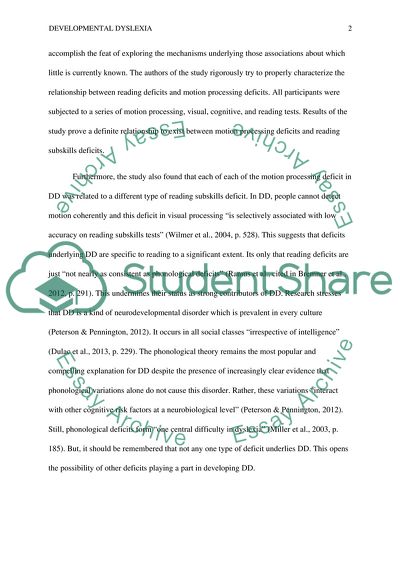Cite this document
(To What Extent Are the Deficits Underlying Developmental Dyslexia Specific to Reading Coursework Example | Topics and Well Written Essays - 2500 words, n.d.)
To What Extent Are the Deficits Underlying Developmental Dyslexia Specific to Reading Coursework Example | Topics and Well Written Essays - 2500 words. https://studentshare.org/health-sciences-medicine/1865731-to-what-extent-are-the-deficits-underlying-developmental-dyslexia-specific-to-reading
To What Extent Are the Deficits Underlying Developmental Dyslexia Specific to Reading Coursework Example | Topics and Well Written Essays - 2500 words. https://studentshare.org/health-sciences-medicine/1865731-to-what-extent-are-the-deficits-underlying-developmental-dyslexia-specific-to-reading
(To What Extent Are the Deficits Underlying Developmental Dyslexia Specific to Reading Coursework Example | Topics and Well Written Essays - 2500 Words)
To What Extent Are the Deficits Underlying Developmental Dyslexia Specific to Reading Coursework Example | Topics and Well Written Essays - 2500 Words. https://studentshare.org/health-sciences-medicine/1865731-to-what-extent-are-the-deficits-underlying-developmental-dyslexia-specific-to-reading.
To What Extent Are the Deficits Underlying Developmental Dyslexia Specific to Reading Coursework Example | Topics and Well Written Essays - 2500 Words. https://studentshare.org/health-sciences-medicine/1865731-to-what-extent-are-the-deficits-underlying-developmental-dyslexia-specific-to-reading.
“To What Extent Are the Deficits Underlying Developmental Dyslexia Specific to Reading Coursework Example | Topics and Well Written Essays - 2500 Words”. https://studentshare.org/health-sciences-medicine/1865731-to-what-extent-are-the-deficits-underlying-developmental-dyslexia-specific-to-reading.


